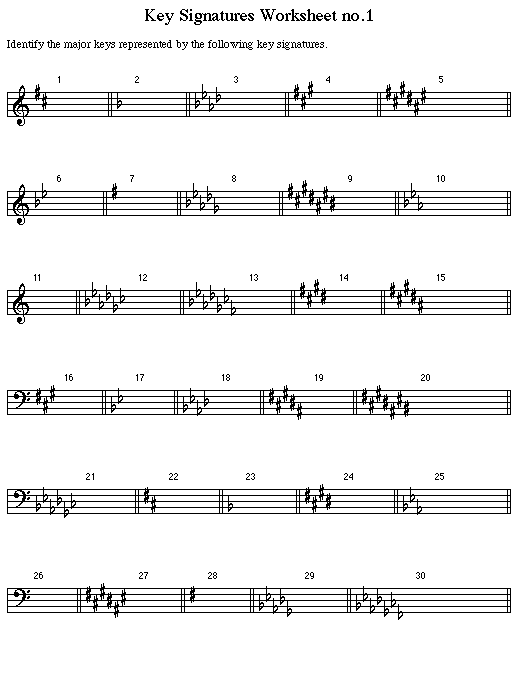The whole note:
Looks like:

an egg on its side, either with a line through it or not.
Looks like:

the same as a whole not but with a vertical line attached to it.
Looks like:

the same as a half note except the circle is filled in.
Looks like:the same as quarter notes but with a curly off the line. They can also be put in groups of 4, 3, or 2.
The sixteenth note:
Looks like:

the same as an eighth note but has double curlies. Can also be grouped in 4, 3 or 2 but are joined by a double line.
- Note Length
In standard notation, a single musical sound is written as a note, The two most important things a written piece of music needs to tell you about a note are its pitch how high or low it is and its duration and how long it lasts.
To find out the pitch of a written note at the clef and the key signature, then see what line or space the note is on. The higher a note sits on the staff, the higher it sounds. To find out the duration of the written note, you look at the tempo and the time signature and then see what the note looks like.

The pitch of the note depends only on what line or space the head of the note is on. pitch , clef and key signature If the note does not have a head that means that it does not have one definite pitch.

If a note does not have head, it does not have one definite pitch. Such a note may be a pitchless sound, like a drum beat or a hand clap, or it may be an entire chord rather than a single note.
The head of the note may be filled in (black), or not. The note may also have (or not) a stem, one or more flags, beams connecting it to other notes, or one or more dots following the head of the note. All of these things affect how much time the note is given in the music.

Basic Stem Direction Rules
Single Notes - Notes below the middle line of the staff should be stem up. Notes on or above the middle line should be stem down.
Notes sharing a stem (block chords) - Generally, the stem direction will be the direction for the not that is furthest away from the middle line of the staff.
Notes sharing a beam - Again, generally you will want to use the stem direction of the note farthest from the center of the staff, to keep the beam near the staff.
Different rhythms being played at the same time by the same player - Clarity requires that you write one rhythm with stems up and the other stems down.
Two parts for different performers written on the same staff - If the parts have the same rhythm, they may be written as block chords. If they do not, the stems for one part (the "high" part or "first" part) will point up and the stems for the other part will point down. This rule is especially important when the two parts cross; otherwise there is no way for the performers to know that the "low" part should be reading the high note at that spot.
Piano Notes and Chords
Piano Notes and Chords

- First start with reading the notes that are not on the staff. The staff is the group of 5 lines. To see the notes on the lines and spaces look at the note charts, notes on the piano alternate from line to space or space to line. When going up the musical alphabet, you are going from line to space or space to line. This is critical to playing piano music notes.

- Note Chart
- And If you are learning how to play the piano, a piano notes chart will be helpful. The chart gives you a layout of the piano keys. It also helps you learn the concepts of the keys. Learn how to play the keys together in sequence and make sweet beautiful music.

 The note names in Bass Clef are:
The note names in Bass Clef are:









